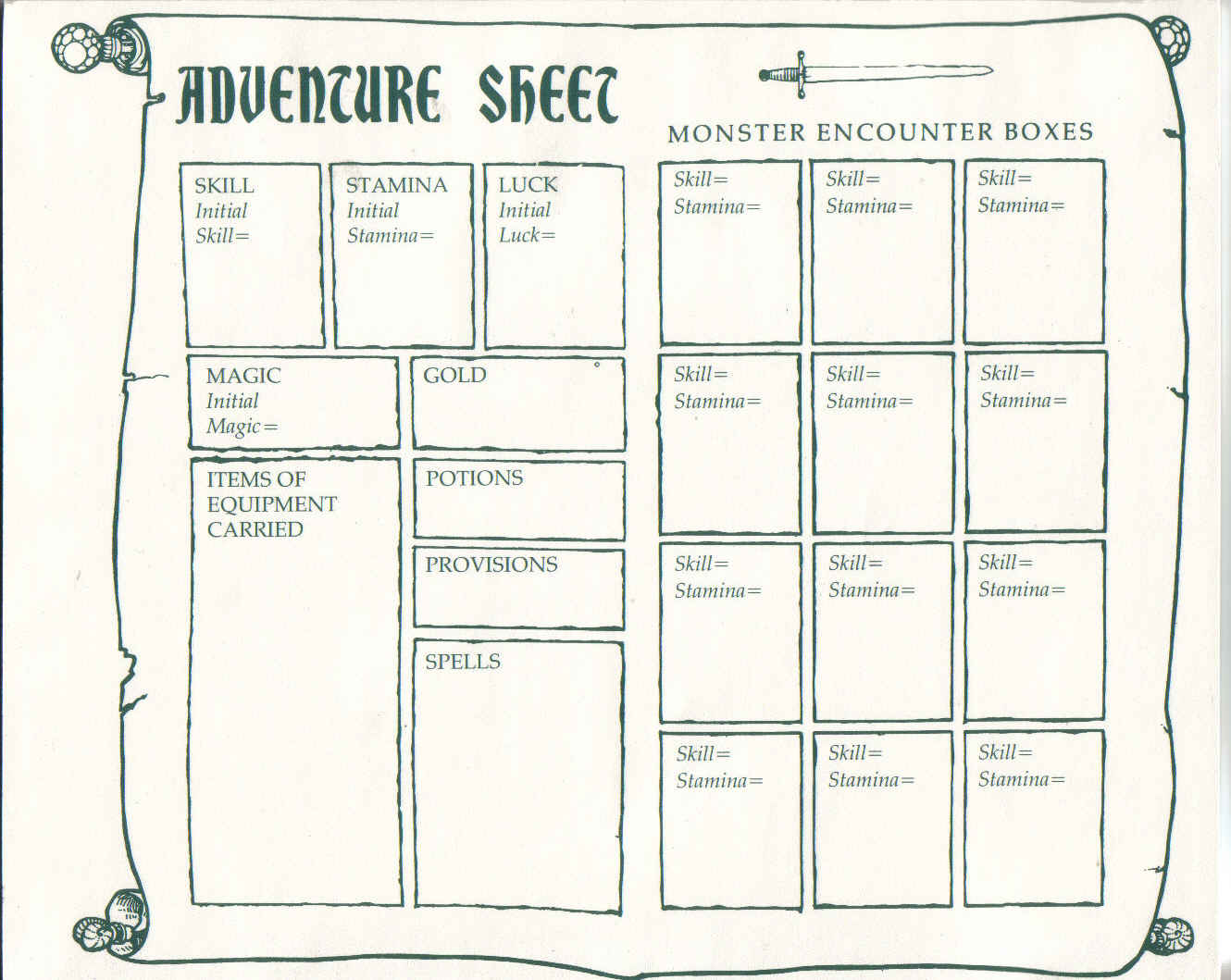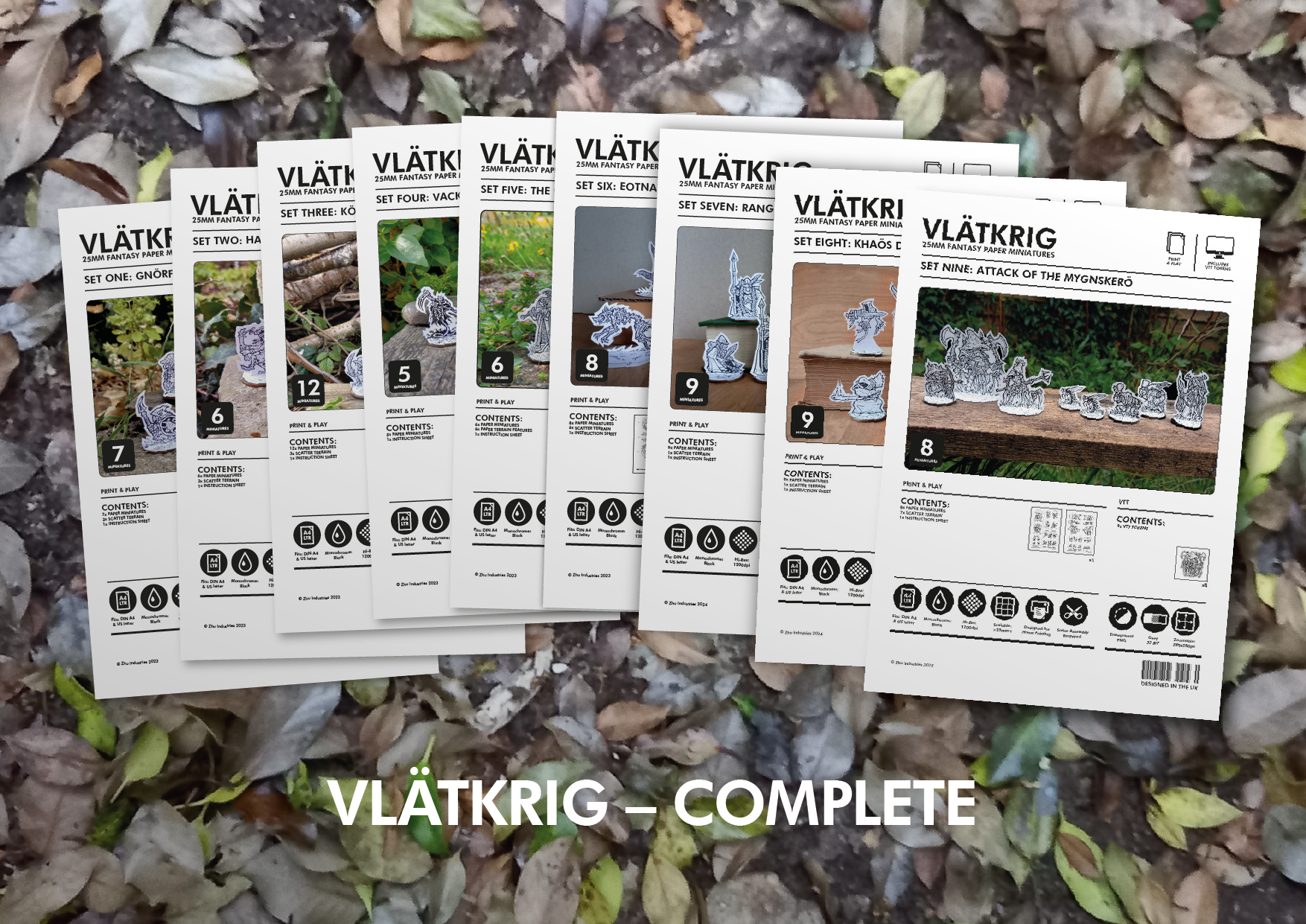 |
| Old School Gates of Death Adventure Sheet by [ZHU] |
You can download a PDF of the Adventure Sheet here: bit.ly/FFSheet
Or if you really want, you can read an overly detailed and meandering account of how this thing came into being ...
While both Jon Green and Ian Livingstone have added to the Fighting Fantasy canon with Bloodbones, Blood of the Zombies and Port of Peril, The Gates of Death represents the first new Fighting Fantasy book by a new author since the original series ceased publication, and seems like a new beginning. The book was enjoyable and while I personally prefer the more grungy lower-level adventures such as Deathtrap Dungeon or Warlock of Firetop Mountain to epic world-saving quests, Higsons book is a fun addition to the range, and I naturally wanted to draw it back into the old world of Fighting Fantasy, and what better (and practical) way than to create an Adventure Sheet for it.
The original design work done on the Fighting Fantasy Adventure Sheet is a classic, it's neat, tidy and has a great tension between bookishness of the no-frills book-face used in the main body typography and a fantasy-adventure atmosphere enhanced by the title font, crooked quill-pen lines and magical scroll and baton frame. For me, this design is one of the hallmarks of the Puffin Fighting Fantasy run.The straight book typography and atmospheric linework creates a fugue between the worlds of dull book reading and the exciting world of play and adventure, forming part of Fighting Fantasy's success in easing reluctant readers into a wider literary world, wheras an approach of adopting a more comic-book or video-game aesthetic would have signalled casual accessibility to the largely pre-teen audience the books are aimed at, perhaps might have unintentionally widened the gap between FF and 'proper books'.
 |
| The Original |
I had drawn up a Fighting Fantasy Adventure Sheet a while ago, based on the Fighting Fantasy Quest Pack design, which covers most of the requirements of the fantasy books. I'd previously used this template to make a Election of Firetop Mountain satire on the 2017 UK General Election - parroting Theresa Mays Strong and Stable election slogan into the Skill and Stamina of some strange political campaigning game book that never was. Having played through The Gates of Death I knew the default sheet would need a little alteration to specifically suit the adventure, allowing more space for the POTIONS, which are a central element of the adventure, and removing SPELLS and MAGIC which don't appear in the book.
The printed layout was roughly sketched and doodled on to get some general ideas down. As mentioned, there are quite a few potions in The Gates of Death and some of them form a critical part of the adventure I thought that could be a a nice theme to develop, and the Smoke-oil potion transforming Demons back into humans was quite a striking visual, and something that could be developed visually and suits the idea of a border quite well so...
 |
| Graphite over Laser Print |
 |
| Ink, cartridge paper, pencil, fineliners, eraser |
After drawing the border I also decided to replace the original simple sword above MONSTER ENCOUNTER BOXES with an Egyptian Khopesh, which is an important artefact in the adventure to further reinforce the thematic links with The Gates of Death. The final inked drawing was then scanned into the computer, cleaned up, removing the grey background to create pure line art, and introduced the pictorial elements to the typography and layout to create the finished design.
Reasonably happy with how it all looked on screen, the sheet was printed it out to give it a test run, making sure it fit inside the book, then playing part way through The Gates of Death until leaving Port Blacksand to make sure there was enough space to write down all the EQUIPMENT and POTIONS required.
 |
| All you need are two dice, a pencil an eraser ...and this Adventure Sheet |
You can download a PDF of the Adventure Sheet here: bit.ly/FFSheet

/pic286405.jpg)














